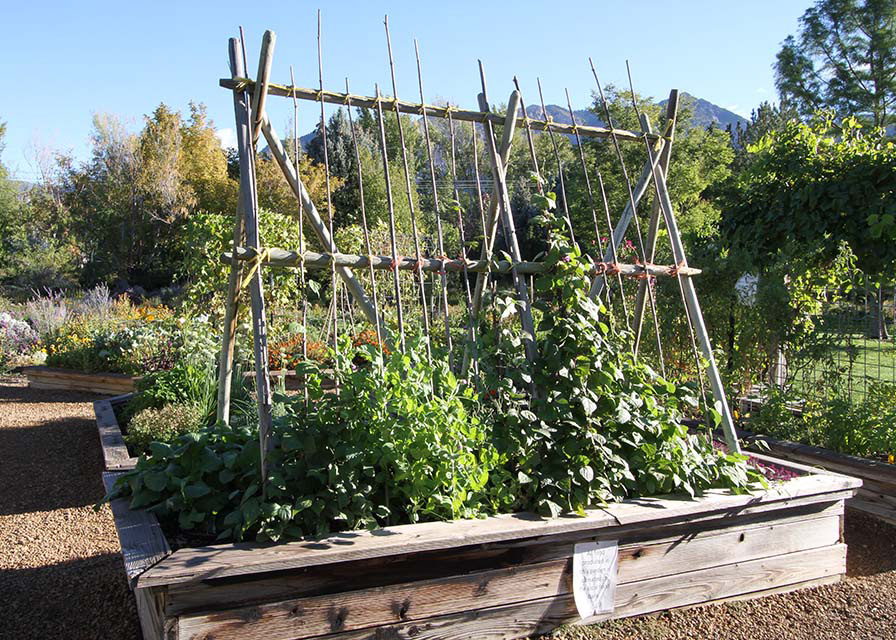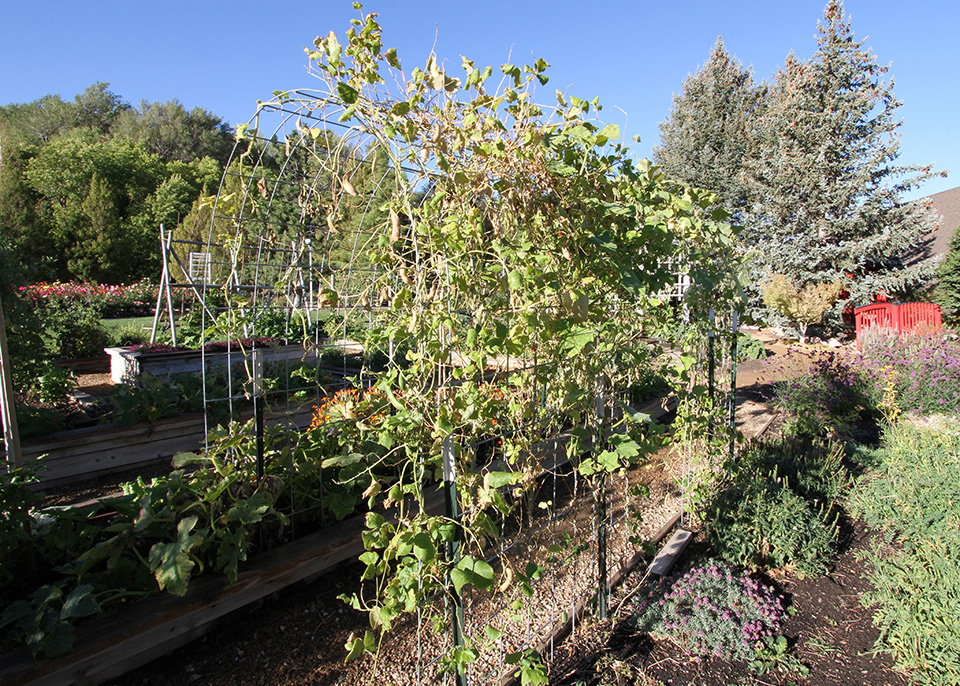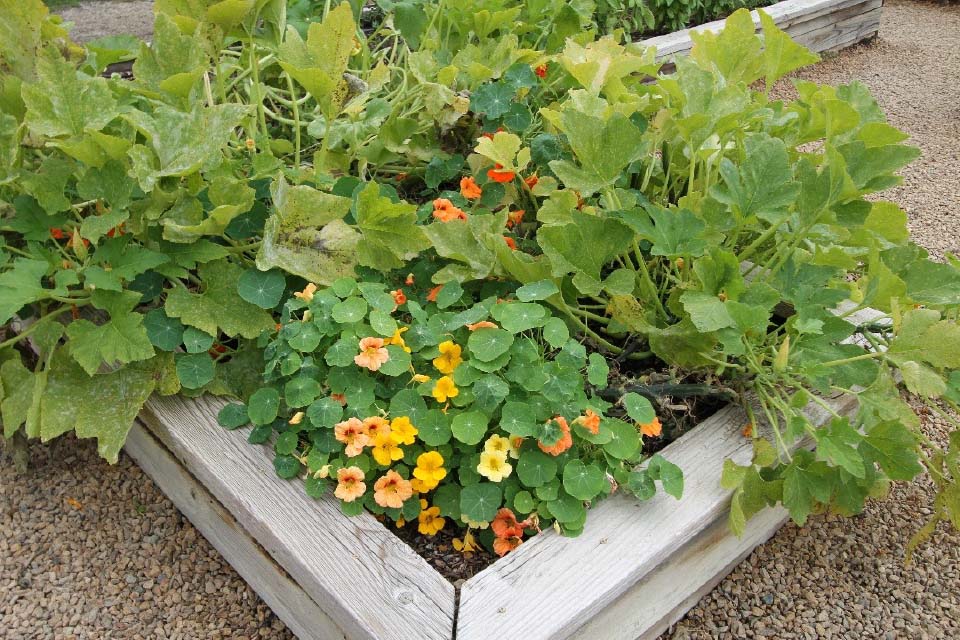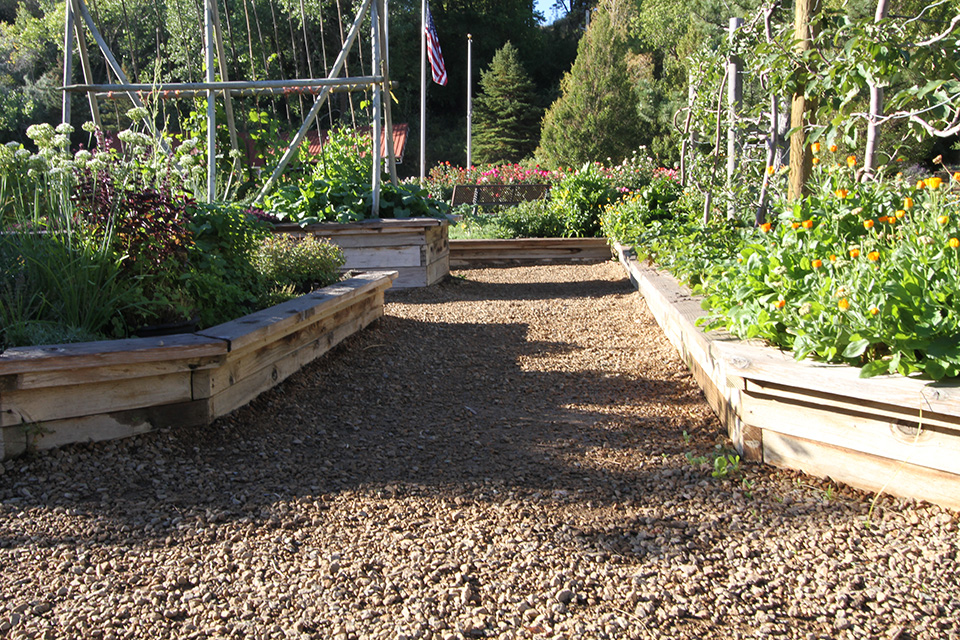Garden Techniques for Limited Space
Espalier planting

Espalier techniques are employed to train a fruit tree to grow a certain way, typically in a 2-dimensional form that takes up a small amount of space. When training fruit trees in the espalier form one should allow for a main leader to grow vertically and secure shoots and branches in place against a wall or lattice in the desired shape and form. When shoots grow in undesired directions or undesired locations, they should be pruned off. For more information on pruning in the espalier technique see page 10 of Pruning the Orchard from Utah State University Extension.
Trellising


Trellising is an excellent way to add more to your garden without expanding on limited space because it allows the plants to grow vertically. There are many garden plants that can be grown using trellising like cucumbers, pole beans, peas, melons, gourds, squash, pumpkins, indeterminate tomatoes, grapes,and various small fruits like blackberries and raspberries. Trellises can be made out of many different types of material and can take on many different shapes and sizes. Arbors, fencing panels, and poles are used here. Trellises can also provide shade for cooler weather garden plants, can provide more air flow for the plants, and can even help to decrease insect pests and disease.
Companion planting

Companion planting has been used for generations with the idea that certain plants can help provided benefits for each other when grown together. Companion planting can take on different forms and can bring different benefits to each plant including nutrient replenishment, disease and pest control, and structure. For example, when legumes such as peas are grown near vegetables like tomatoes the legume fixes nitrogen into the soil which can reduce needed fertilizer. When nasturtium is planted with summer squash the nasturtium can help mask the summer squash from squash bugs. Sunflowers can provide a living trellis structure for plants like beans or small pumpkins. Companion planting also provides diversity in the garden habitat which attracts beneficial insects.
Crop rotation
Crop rotation is an important practice in reducing pest and disease and promoting soil health. If certain plants were to grow in the same spot every year the soil would become depleted of the nutrients needed by that specific plant. When crop rotation is used, different soil nutrients are used or replaced during each rotation which enhances the ability of the soil to continue to support crops. Legume plants, like peas, have the ability to replace nitrogen back into the soil and are often planted after plants that take up a large amount of nitrogen.Succession planting is also used as a form of crop rotation here in the garden. Not all plants grow well all at the same time. Some plants grow well in the spring and others in the late summer and early fall. Succussion planting is used to get the most food out of one season by planting early crops, harvesting them, and then planting crops that grow well later in the season in their place. For further information on crop rotation and succession planting see this USU Extension Video and search the USU extension website.
Raised bed gardening

Raised bed gardening has many benefits. Raised beds make it easier to amend soils (making soil suitable for growing your desired plants) which can be difficult or impossible in some poor soil landscapes. Raised beds can also grow more plants in less space, especially when used with trellising, and are easier to care for as they reduce the need for constantly bending over and kneeling down. There are many types of raised bed gardening and things to keep in mind when planning them. For this information see USU Extension Raised Bed Gardening.
References
-
Charbonneau, J. (2017, April 5). Vertical Gardening: The Beginners Guide to Trellising Plants. Retrieved from Southern Exposure Seed Exchange: https://blog.southernexposure.com/2017/04/vertical-gardening-the-beginners-guide-to-trellising-plants/
-
Heflebower, R., Wagner, K., Gunnell, J., & Condrat, J. (2021). Raised Bed Gardening. Retrieved from Utah State University Extension Yard and Garden: https://extension.usu.edu/yardandgarden/research/raised-bed-gardening
-
Murray, M. (2015). Companion Planting. Utah State University Extension Vegetable IPM Advisory, 1-2.
-
Utah State University Extension. (2021, April 29). Crop Rotation in the Home Garden. Retrieved from https://www.youtube.com/watch?v=J61tjOLTwZM
-
Wagner, K., & Olsen, S. e. (2014). A Guide to Common Organic Gardening Questions. Logan, UT: USU Extension.
-
Walliser, J. (2020). Plant Partners: Science-Based Companion Planting Strategies for the Vegetable Garden. North Adams, MA: Storey Publishing.
-
Walser, R. H., Wright, W. A., Hamson, A. R., Drost, D., & Hatch, T. (1994). Pruning the Orchard. Utah State University Extension, electronic publishing, 10-11. Retrieved from Utah State University: https://digitalcommons.usu.edu/cgi/viewcontent.cgi?article=1724&context=extension_histall
Author
Tiana Miller and Helen Muntz


